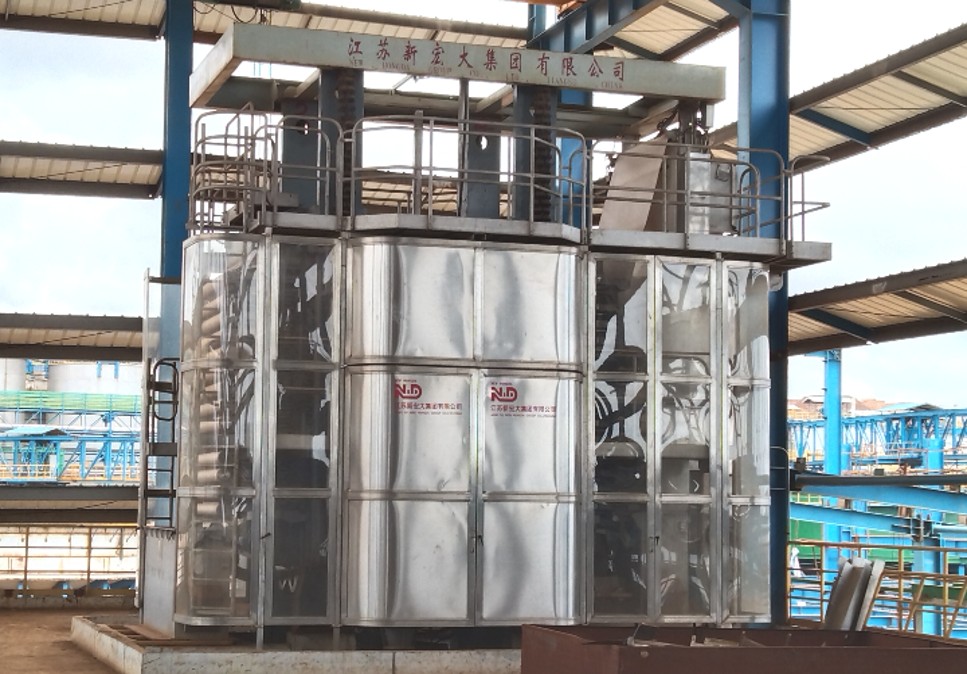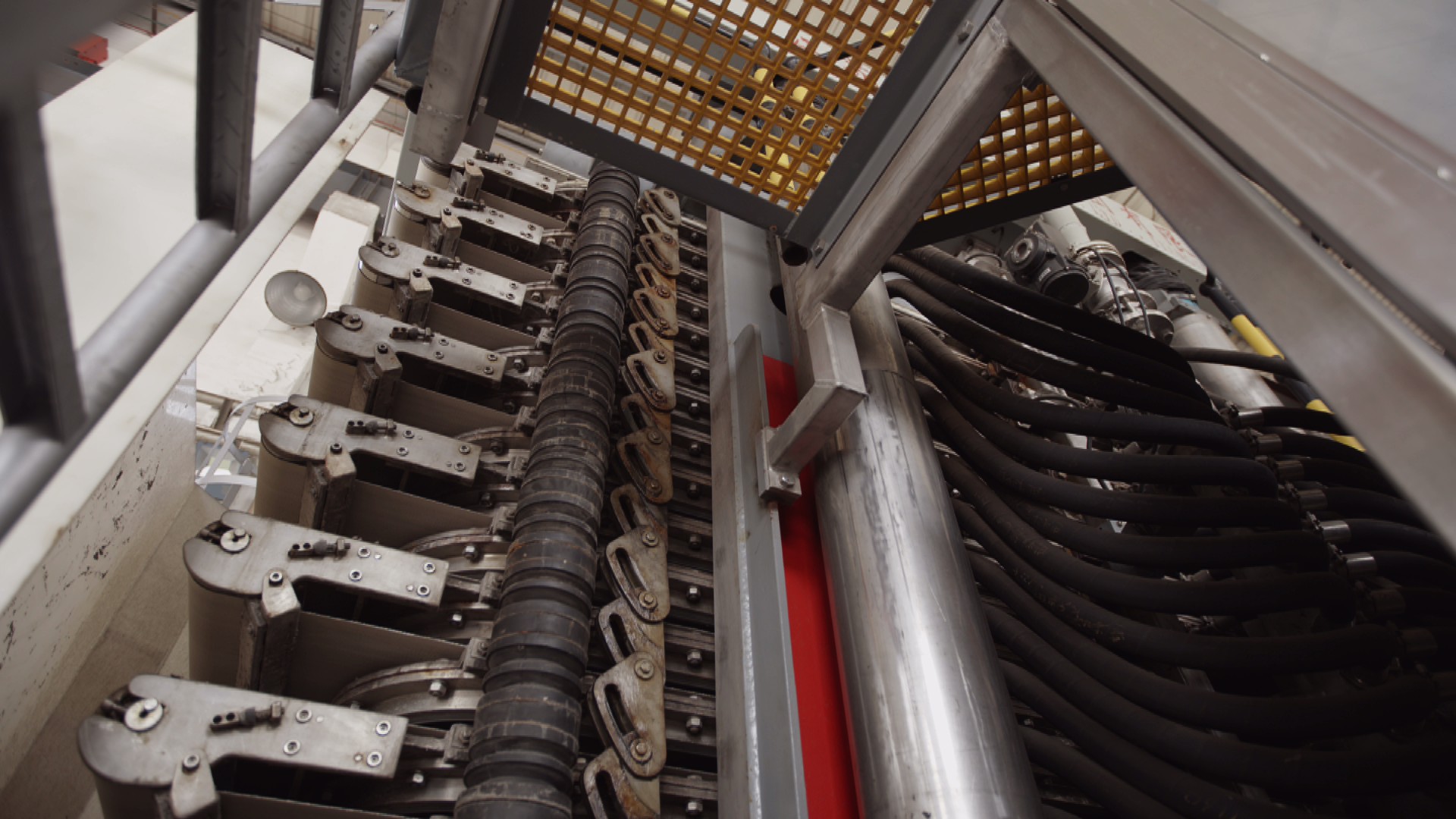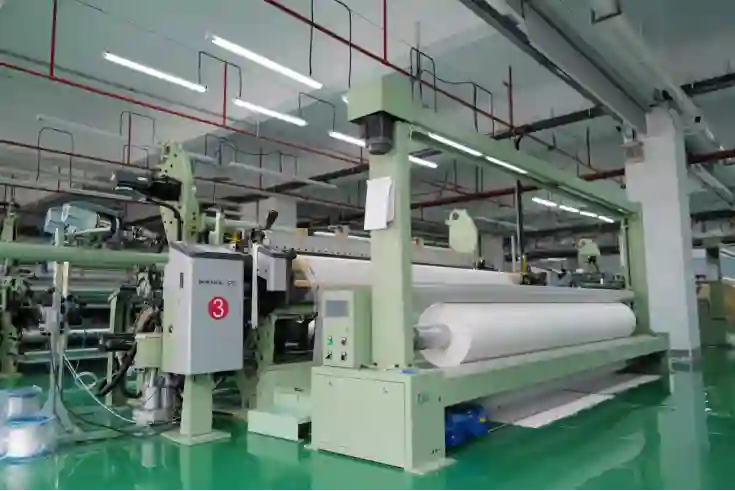The achievement of low moisture content in filter cakes stands as a critical requirement for industrial solid-liquid separation operations because it enhances product quality and decreases energy usage and facilitates better downstream processing. The tower filter press operates as a vertical filter press which finds extensive use in different industries because it combines a small footprint with superior dewatering performance. Users of tower filter presses encounter ongoing difficulties when their filter cakes contain excessive moisture. The identification of moisture content problems in filter cakes needs a complete evaluation of equipment structure and operational settings and material properties and filter cloth functionality.

Overview of Tower Filter Press Operation
The solid-liquid separation process of Tower filter presses relies on pressure to push liquid through a filter medium which keeps solid particles from passing through.
Basic Mechanism of a Tower Filter Press
The process starts by pumping slurry into a filtration chamber which consists of vertically arranged plates. The slurry moves through the pipeline to enter each filter frame slurry chamber where it passes through the filter cloth to create filter cake while the filtrate exits through the filtrate pipe. The diaphragm squeeze operation follows feeding completion to pressurize the cake for enhanced moisture extraction. The process includes cake washing followed by air drying as optional steps before the system performs automatic discharge.
Common Applications in Industrial Filtration
The phosphate chemical processing industry uses Tower filter presses to treat phosphogypsum and extract phosphoric acid from its production waste. The phosphate chemical industry employs Tower filter presses to treat phosphogypsum and to extract phosphoric acid from tank sediment and tank residue.
Factors Affecting Moisture Content in Filter Cake
The amount of moisture that stays in a tower press filter cake depends on multiple factors which include the properties of the feed slurry and operational parameters and the characteristics of the selected filter cloth.
Influence of Feed Slurry Characteristics
The way feed slurry is composed and behaves determines how well filtration works.
Particle Size Distribution
The combination of large and small particles in a mixture leads to pore clogging and creates unbalanced cake layers. The presence of particles with different sizes causes filter cake to become clogged while producing an uneven structure. The poor drainage of water through the material becomes a problem because of the blocked pathways that occur during compression and drying stages.
Slurry Concentration and Viscosity
The flow of fluid through the cloth becomes restricted when dealing with highly viscous slurries that contain high solid concentrations. The filter cloth becomes obstructed by sticky materials which create blockages while making the filtration process more challenging. The process fails to achieve complete dewatering even when operating at elevated pressure levels.
Role of Filtration Pressure and Cycle Time
The operational parameters of pressure levels and cycle duration determine the efficiency of solid water extraction.
Effect of Inadequate Pressure on Dewatering Efficiency
The cake matrix requires sufficient system pressure to remove water effectively during squeezing and air-drying operations. The filtration power depends on equipment pressure for its operation. The dewatering process becomes less efficient when operating at lower pressure levels.
Impact of Short or Inconsistent Filtration Cycles
The short cycle duration prevents complete compression and drying of the material. The process of batch drying results in inconsistent moisture content because of irregular timing.
Limitations Related to Filter Cloth Selection
The process of solid-liquid separation depends heavily on filter cloth because it enables both liquid flow and solid removal.
Permeability and Weave Type
The permeability of a cloth determines how well it allows water to pass through since improper permeability leads to water retention in cakes or solid particle leakage. The weave pattern of a cloth determines how well particles can penetrate its pores.
Compatibility with Process Materials
The use of incompatible materials results in fast deterioration and clogging problems. The selection of inappropriate filter cloth based on equipment and environmental conditions results in inadequate filtration performance and excessive moisture accumulation.
Design Constraints and Mechanical Considerations
The performance of dewatering operations depends on operational variables as well as structural elements which affect the entire process.
Structural Configuration of Tower Press Systems
The vertical arrangement of Tower presses enables space-efficient operation but creates problems with gravity-driven material flow stability. The four-column vertical design maintains a compact footprint because the present largest 168㎡ installation requires only 15m*6m of floor space.
Challenges in Uniform Cake Formation and Compression
The process of cake compression becomes less effective when plates do not align properly because non-uniform feeding causes uneven cake thickness.

Operational Practices That Contribute to High Moisture
The way slurry input gets managed through daily practices together with component maintenance operations determines final results.
Inconsistent Slurry Feeding and Flow Control
The process of cake formation becomes irregular when feed rates change or when materials are distributed unevenly between chambers which results in cakes that hold more water than standard cakes.
Insufficient Maintenance or Cleaning of Filter Cloths
The pores become clogged by remaining particles when they are not cleaned correctly. The accumulation of material particles on the filter cloth creates a blockage that prevents water from passing through which leads to excessive moisture content. The permeability decreases when maintenance is inadequate even when other parameters remain optimized.
Solutions to Reduce Moisture Content in Filter Cake
The solution to high moisture problems requires optimizing production processes and selecting materials which match particular environmental conditions.
Optimizing Operating Parameters
System behavior requires real-time monitoring to determine necessary adjustments.
Adjusting Pressure, Time, and Feed Rate
The operators need to apply proper squeeze pressure during diaphragm expansion followed by an appropriate air-drying period. The feed rates need to match system capacity while preventing early chamber overload.
The system operates at 16 kg maximum pressure while air drying (mainly air drying) reduces phosphogypsum filter cake moisture to 10% which is below the 25% standard.
Upgrading to Advanced Filter Cloth Materials
Modern synthetic fabrics provide improved resistance to clogging while delivering higher throughput rates.
Features of Low-Moisture Retention Fabrics
The optimal pore structure of high-quality cloths enables them to maintain solid particles while allowing liquid to pass through. The materials maintain their shape through multiple cycles which extends their operational period and enables them to work with automated cleaning systems that bring back their performance after each production run.
The use of substandard filter cloth materials leads to cake adhesion and cloth deformation which negatively affects filtration performance.
NHD: A Trusted Supplier for Industrial Filtration Equipment and Materials
NHD delivers specialized solutions that address large-scale solid-liquid separation needs through their expertise in tower press systems.
Product Lines Offered by NHD
The NHD vertical tower presses operate under automated control systems which enable continuous operation at elevated pressure levels. The equipment provides advanced capabilities through alternate-side automatic washing for efficient self-cleaning regeneration. The system performs automatic front and back filter cloth washing followed by efficient self-cleaning regeneration.
The NHD offers specialized high-performance filter cloths that work well with demanding operations including phosphogypsum treatment which requires strict moisture control.

Summary and Key Takeaways
High moisture content in tower filter cakes stems from factors such as clogged or low-quality filtre bezleri, inadequate equipment pressure, improper feeding practices, high-viscosity materials, short cycle times, and incompatible particle sizes. To address these issues and optimize production, it’s crucial to select appropriate fabric types, apply optimal pressures up to 16 kg, maintain proper cleaning routines, and utilize automated controls from trusted manufacturers like NHD to ensure efficient material processing and equipment performance.
FAQs:
Q1: What causes high moisture content in tower filter cakes produced during full cycles, and how can it be addressed?
A: High moisture in tower filter cakes can result from insufficient filtration pressure, blocked or inappropriate filter cloths, short cycle times, and thick feed materials. To minimize residual moisture, regular maintenance combined with optimal process parameter settings is essential for ensuring efficient filtration and drier cakes.
Q2: Will replacing the filter cloth produce noticeable results?
A: Yes, replacing the filter cloth can yield significant improvements. Low-quality or unsuitable fabrics often cause sticking and blockages, leading to poor filtration. Using advanced materials tailored to your application enhances permeability control and provides long-term resistance to deformation, resulting in drier filtration cakes.
Q3: What benefits does NHD’s tower press offer compared to standard models?
A: NHD’s vertical tower press systems operate automatically, achieving pressure levels up to 16 kg, with fast unloading and dual-sided self-cleaning operations. These features ensure consistent low-moisture output and reduced downtime between production cycles, enhancing overall efficiency compared to standard models.

